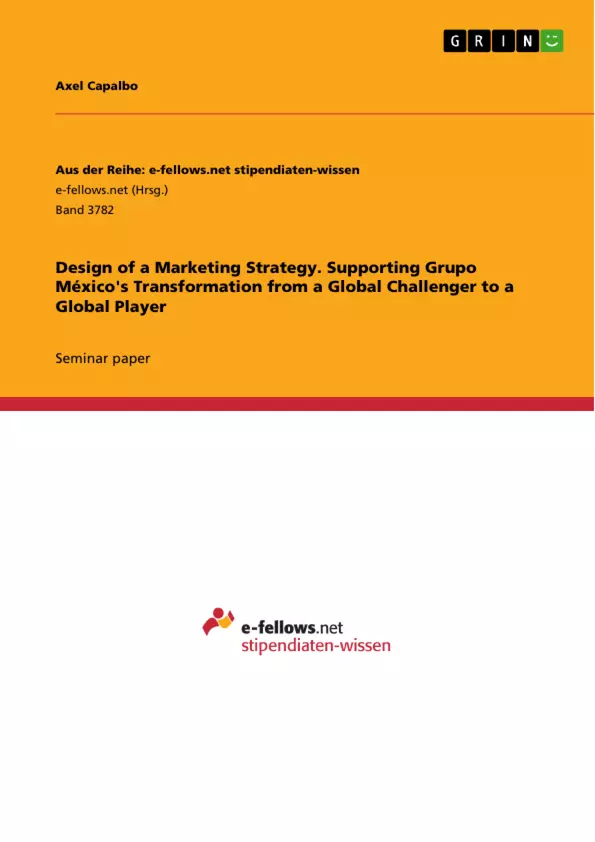In the domain of present-day entrepreneurial activities, the zeitgeist is dominated by the dynamic nature of globalisation reflected in several aspects of global marketing. Under the assumption of free border and culture-crossing transfers of goods and services, the majority of international entities is continuously pressured to solve a variety of issues. For instance, while it is forced to stabilise its supply chain through B2B partnerships, stay informed about the market situation, evaluate the necessity of an adaptation and guarantee its own profit growth, the enterprise is not allowed to neglect the creation and delivery of the value needed by the customer, along with finding the best method to satisfy the stakeholders.
However, one of the greatest uncertainties an established company is permanently confronted with is the question whether it is ignoring the drastic pace of change. The consequence is visible through the loss of its competitiveness, provoked by the entry of new competitors or substitutes outrunning the firm in terms of market share, the customers’ brand loyalty, product quality, the degree of innovation etc. This risk increased especially due to the appearance of global challengers from rapidly developing economies, mainly hailing from Asia and Latin America. Among all these newcomers, Grupo México, a representative of the metals and mining branch, pertains to the group of the most auspicious firms and serves as the central object of investigation for this report.
The first chapter presents a topical overview of GM’s business units, their respective product portfolio and market focus, along with the reasons for their success on domestic, regional and international level and their competitive advantages.
The second chapter continues the exploration of GM’s current state with a critical evaluation of the environmental trends informing the international market sector of the extractive industries. Based on the concepts of PESTLE and SWOT analyses among others, this part unifies both the macroeconomic and the microeconomic business spheres to mirror the strengths, weaknesses, threats and opportunities, which the corporation is facing as a global challenger.
The third and final section contains a set of recommendations implying an exclusive strategic approach designed to underpin GM’s pursuit of becoming an established global player.
Inhaltsverzeichnis (Table of Contents)
- Introduction
- Grupo México's profile
- Structure, product and service portfolio and market focus
- Pillars of success
- Rationale for further investigation
- Critical evaluation: Position on the global mining market
- Environmental trends resulting from the PESTLE analysis
- Political and legal environment
- Socio-cultural and environmental aspects
- Economic and technological tendencies
- Relation between Grupo México and its competitors
- The findings from the SWOT analysis
- Environmental trends resulting from the PESTLE analysis
- Conclusions and recommendations
- Decision for the division to expand
- Market selection
- Adaptation of the organisation's value chain
- The suggestion at a glance
Zielsetzung und Themenschwerpunkte (Objectives and Key Themes)
This report aims to critically analyze the global position of Grupo México, a prominent player in the metals and mining industry, and provide recommendations for its future expansion strategy. The report delves into the company's structure, product and service portfolio, and market focus, while examining its competitive landscape and identifying key environmental factors influencing its performance.- Grupo México's market position within the global mining industry
- The impact of environmental factors on Grupo México's operations
- Comparative analysis of Grupo México's strengths and weaknesses against its competitors
- Recommendations for expansion strategies based on internal and external analysis
- The role of cultural dimensions in shaping market selection and value chain adaptation
Zusammenfassung der Kapitel (Chapter Summaries)
- The introduction provides an overview of the global market landscape and highlights the importance of adaptability for companies facing growing competition. It emphasizes the significance of Grupo México as a prominent firm in the metals and mining sector.
- Chapter 1 delves into Grupo México's profile, exploring its structure, product and service portfolio, and market focus. It also outlines the company's pillars of success and explains the rationale for further investigation.
- Chapter 2 critically evaluates Grupo México's position within the global mining market, examining the impact of environmental trends identified through a PESTLE analysis. It also analyzes the company's relationship with its competitors and presents the findings of a SWOT analysis.
Schlüsselwörter (Keywords)
This report focuses on the global marketing of Grupo México, a key player in the metals and mining industry. It examines the company's strengths and weaknesses, its competitive landscape, and the influence of environmental factors, including political, economic, social, technological, legal, and environmental aspects. The report also explores cultural dimensions and their implications for market selection and value chain adaptation. Key concepts include PESTLE analysis, SWOT analysis, global competitiveness, and strategic expansion.- Quote paper
- Axel Capalbo (Author), 2017, Design of a Marketing Strategy. Supporting Grupo México's Transformation from a Global Challenger to a Global Player, Munich, GRIN Verlag, https://www.grin.com/document/1010179



